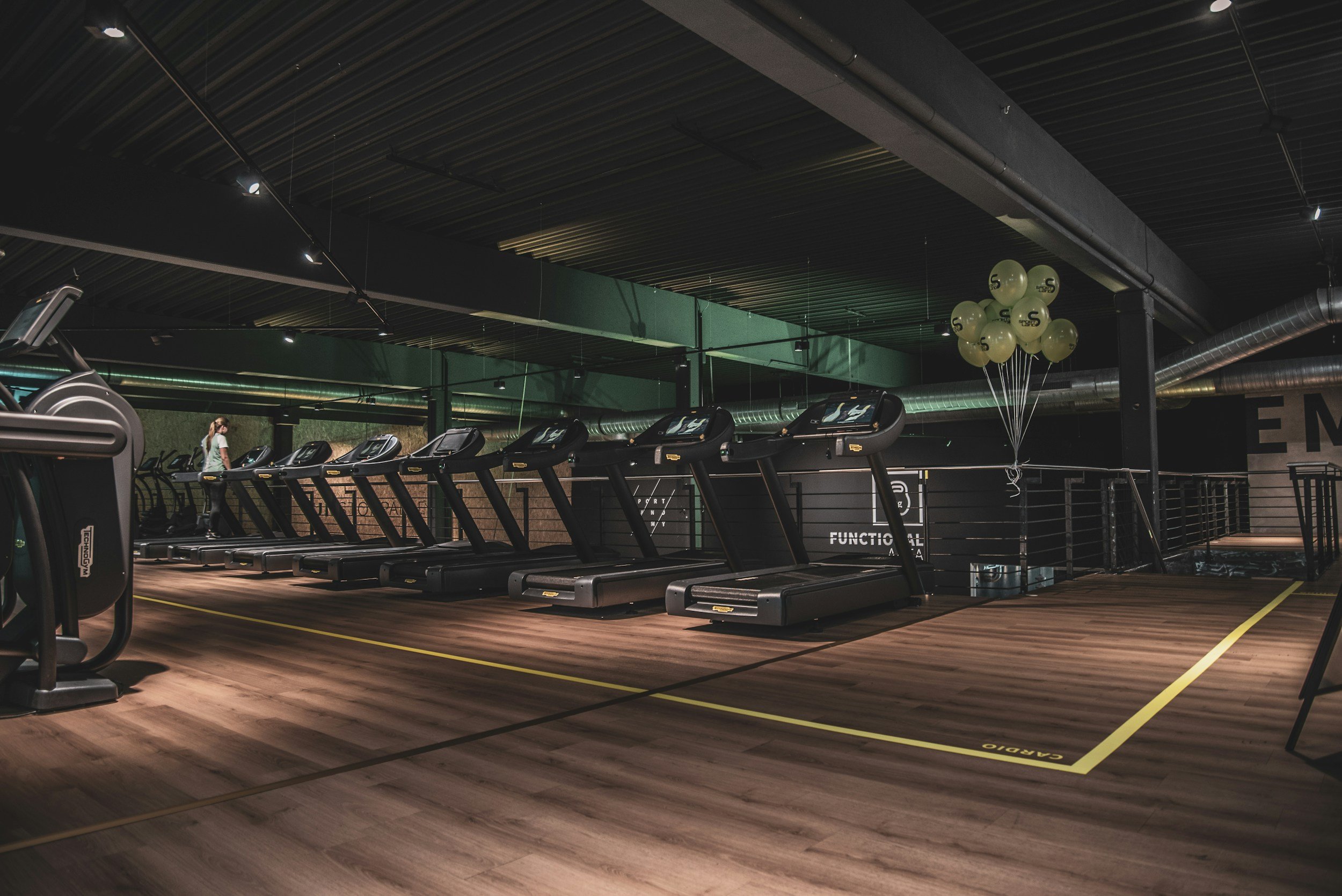BLOG

How to Stay Motivated When You Hit a Fitness Plateau
Hitting a fitness plateau can be discouraging, but it’s also an opportunity to reassess and rejuvenate your fitness journey. In this blog, we explore effective strategies to overcome plateaus and reignite your motivation. From setting new goals and diversifying your routine to focusing on nutrition and recovery, we provide actionable tips to help you break through barriers and continue making progress. Discover how to stay positive, track your achievements, and seek support to keep moving forward on your path to fitness success.

Home Workouts vs. Gym Workouts: Which is Right for You?
Choosing between home workouts and gym workouts can be challenging, as each offers unique advantages and drawbacks. In this blog, we delve into the benefits and challenges of both options to help you determine which is right for you. Discover how the convenience and cost-effectiveness of home workouts stack up against the diverse equipment and professional guidance available at the gym. We also explore how factors like motivation, space, and routine preferences play a role in making the best choice for your fitness journey. Dive in to find out which workout environment aligns with your lifestyle and helps you stay on track with your fitness goals.

Recovery is Key: Effective Techniques for Faster Muscle Repair
In the quest for fitness and performance, recovery is often the unsung hero. This blog delves into essential techniques for faster muscle repair, emphasizing the importance of rest, stretching, nutrition, and recovery tools. Learn how prioritizing quality sleep, incorporating both dynamic and static stretching, and optimizing your post-workout nutrition can significantly enhance your recovery. We also explore the benefits of tools like foam rollers, massage therapy, and Epsom salt baths. By understanding and applying these strategies, you can prevent injuries, improve performance, and support your long-term fitness goals. Discover how to make recovery an active part of your training regimen and elevate your overall well-being.

Delicious & Nutritious Recipes to Support Your Fitness Goals
Fuel your fitness journey without sacrificing flavor! From a protein-packed breakfast to a post-workout power bowl, this blog shares five delicious recipes designed to support your workouts and recovery. Whether you're building muscle, training for a race, or just staying active, these nutrient-rich meals will keep you energized and on track with your fitness goals.

Nutrition 101: Fueling Your Fitness Goals with the Right Diet
As we welcome 2025, it's the perfect time to focus on your fitness goals, and nutrition plays a pivotal role in achieving them. This blog dives into the importance of fueling your body with the right diet to support muscle gain, weight loss, endurance, and overall health. Learn why nutrition matters—from enhancing performance and muscle repair to boosting metabolic support and immune function. Discover practical dietary tips such as prioritizing protein, balancing macronutrients, staying hydrated, and planning meals. Embrace the connection between nutrition and fitness to ensure you’re on the path to success and a healthier, more vibrant life.

Staying on Track with Your Fitness Goals During the Holiday Season: A Holistic Approach to Nutrition
The holiday season is here, and while it’s a time for celebration, it can also pose a challenge for sticking to your fitness goals. But don’t worry! With a holistic approach to nutrition, you can fuel your body with the right nutrients while still enjoying the festive meals. In this blog, we dive into how to balance lean proteins, healthy fats, and complex carbs during the holidays, as well as offer mindful eating tips to help you navigate Christmas treats. Keep your fitness goals in check, enjoy your holiday favorites, and feel your best all season long.

How to Create a Balanced Workout Routine: Tips for Beginners and Pros
A well-rounded workout plan is key to achieving fitness goals and maintaining health. Here’s a concise guide to structuring your routine:
1. Strength Training Include strength exercises like weightlifting, resistance bands, or bodyweight moves two to three times a week. Beginners should start with lighter weights and focus on form; advanced lifters can increase intensity.
2. Cardiovascular Exercise Incorporate cardio activities such as running, cycling, or swimming for at least 150 minutes of moderate or 75 minutes of vigorous intensity per week. Vary your cardio workouts to keep things interesting and effective.
3. Flexibility and Mobility Add stretching and mobility exercises to improve range of motion and prevent injuries. Aim for dynamic stretches before workouts and static stretches afterward. Yoga and Pilates are great options and should be done two to three times a week.
4. Structuring Your Routine Combine strength, cardio, and flexibility workouts based on your schedule and goals. For example, do strength training on Mondays and Thursdays, cardio on Tuesdays and Fridays, and flexibility on Wednesdays and Saturdays. Don’t forget to rest and listen to your body.
5. Staying Consistent and Motivated Set realistic goals, track progress, and vary your workouts to stay motivated. Consider a personal trainer if you need extra guidance.
Holiday Season Balance Enjoy the holidays without derailing your fitness goals. Balance festive indulgence with some physical activity and mindful eating to stay on track.
By mixing strength, cardio, and flexibility, you’ll create a balanced workout routine that supports your overall health and fitness.
Happy Holidays!

The Benefits of Strength Training for All Ages: Why It Matters
Strength training benefits everyone, from kids to seniors, by enhancing overall health and well-being. Here’s a quick overview of its advantages across different age groups:
For Children and Teens
Strong Foundations: Develops muscles and bones, improves athletic performance, and supports coordination.
Injury Prevention: Enhances muscle strength and joint stability, reducing injury risk.
Healthy Habits: Instills a lifelong appreciation for fitness and encourages ongoing physical activity.
For Adults
Maintains Muscle Mass: Counteracts age-related muscle loss and supports functional fitness.
Boosts Metabolism: Increases resting metabolic rate, aiding in weight management.
Supports Joint Health: Strengthens muscles around joints, reducing pain and improving mobility.
For Seniors
Improves Bone Density: Fights osteoporosis and reduces fracture risk with weight-bearing exercises.
Enhances Balance: Boosts balance and coordination, preventing falls and supporting independence.
Supports Mental Health: Reduces symptoms of depression and anxiety, improving overall quality of life.
Universal Benefits
Functional Fitness: Makes daily tasks easier, from lifting groceries to climbing stairs.
Cardiovascular Health: Improves heart health and circulation.
Overall Well-being: Increases energy, enhances sleep quality, and boosts self-esteem.
Incorporate strength training into your routine to enjoy these benefits and support your health at any age.

The Top 5 Fitness Myths Debunked: What You Need to Know
Navigating fitness can be challenging with so many myths out there. Here’s the truth behind five common misconceptions:
Myth: You Need to Exercise for Hours Every Day to See Results
Truth: Short, high-intensity workouts can be just as effective as longer sessions. Consistent 30-45 minute workouts a few times a week can yield significant results.
Myth: Cardio is the Best Way to Lose Weight
Truth: While cardio is beneficial, strength training is crucial for weight loss. Building muscle increases your resting metabolic rate, so combine cardio with strength exercises for balanced weight management.
Myth: You Can Spot-Reduce Fat in Specific Areas
Truth: Fat loss happens throughout the body, not in targeted spots. Focus on a comprehensive routine that includes cardio, strength training, and a balanced diet for overall fat reduction.
Myth: You Have to Follow a Strict Diet to See Fitness Results
Truth: Sustainable dietary changes are more effective than strict diets. Emphasize whole foods, balanced meals, and portion control for long-term success.
Myth: More Sweat Equals a Better Workout
Truth: Sweat levels vary and don't necessarily reflect workout effectiveness. Focus on the quality of your workout, not just how much you sweat.
Understanding these myths can help you optimize your fitness routine and achieve your goals more effectively. Stay informed and consider consulting a personal trainer for personalized advice.

